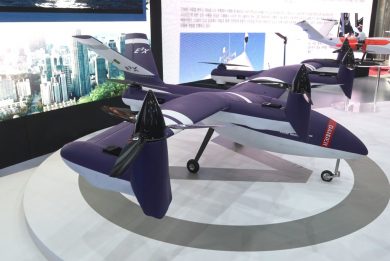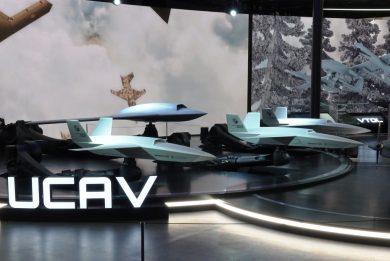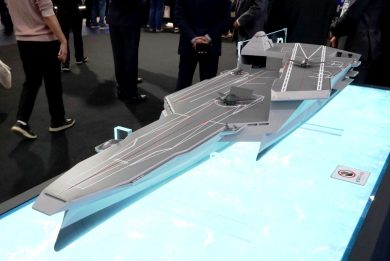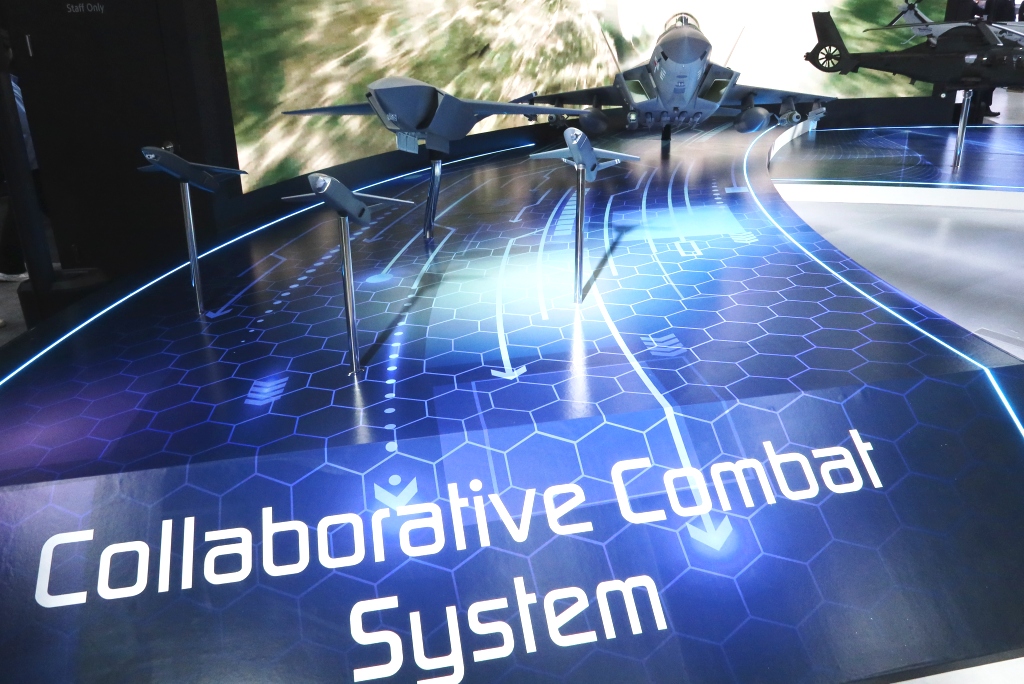
ADEX 2023 – KAI unveils its Combat Collaborative System
At ADEX 2023 Korea Aerospace Industry, KAI in short, unveiled its next generation air and space combat system vision, also known as Combat Collaborative System
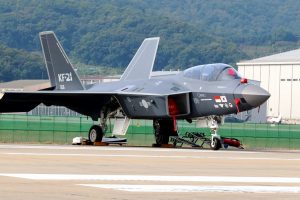
At the core of the system we find the KF-21, which prototype n.6, the second of the two twin-seaters produced, the four other protos being single-seaters, was flying in the sky over the Seoul Airport while in the KAI booth EDR On-Line was briefed on the Combat Collaborative System.
The Indonesian and Korean flags were clearly painted on the aircraft side, just under the cockpit, although the commitment of Jakarta to honour the financial agreement, as its payments are running late. The KF.21 Boromae, for fighting hawk, flew for the first time on July 19th, 2022, and is making its public debut at an airshow during ADEX 2023.
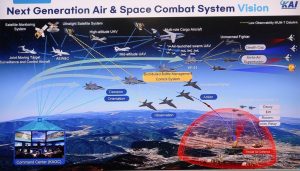
The 25.6 tonnes MTOW aircraft powered by two F414-GE-400K turbofans with afterburner providing an overall maximum thrust of nearly 20 tonnes can fly at Mach 1.81 and carry a maximum payload of 7,700 kg.
Considered a 4.5 generation fighter, it will definitely be the manned element of the future generation Korean air combat system. This means that n a way or another the programme will continue, although no contract for the aircraft acquisition has yet been filed to industry. Plans however remain for the KF-21 to enter into service in September 2026, according to KAI representatives.

The unmanned component of the system will be based on two different types of airframes. The smaller ones, defined by KAI as unmanned adaptable aerial platform, will be those tasked to open the way to manned and unmanned fighters. With a low observable fuselage with high wings and a V-shaped tailplane, its mass will be of less than 150 kg and the first flight of a demonstrator is expected in 2025. The modular payload in the nose will allow to easily adapt the carrier to the mission, three main tasks being foreseen; Decoy, Electronic Warfare and Intelligence (EW), Surveillance, Reconnaissance (ISR). Decoy will be used to trigger enemy air defences, EW then taking action, jamming enemy assets and opening the corridor to attack assets.
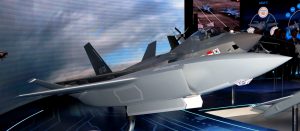
The first ones will be the Unmanned Fighter; this is a much larger aircraft which architecture resembles that of its smaller partners, and has a weapon load made of two air-to-air missiles and four Small Diameter Bombs. Manned aircraft would follow, possibly launching their weaponry from safe distance thanks t the work of the unmanned, the latter configuration of the adaptable aerial platform, the ISR, which will overfly targets in order to provide near-real time battle damage assessment. No details were provided on the latter, which planned in-service is 2035.
As other future air combat programmes also the Korean one is based upon a strict cooperation between manned and unmanned systems, MUM-T for Manned UnManned Teaming becoming the mantra of the future aviation. EDR On-Line understood that twin-seat KF-21s may play a key role, the officer flying the rear seat being tasked mostly for commanding and controlling multiple UAVs, however workload reduction technologies and constantly increasing UAVs autonomy will allow also single seaters to coordinate the attack package, the other key element of the system being the high-speed and wideband data link that will allow constant data flow among all players in the air.
Photos by P. Valpolini

